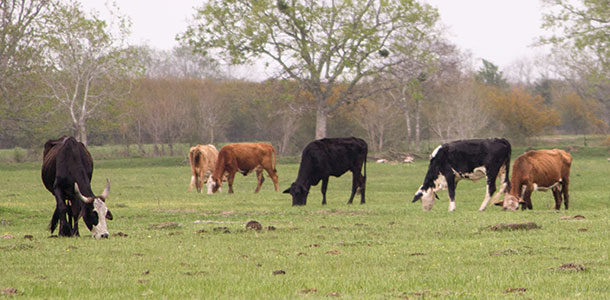Grass growth is stimulated by nitrogen fertilizer, just like other crops. Although nitrogen fertilizer can be expensive, favorable cattle prices greatly increase the potential to profit from the increased grass growth produced from nitrogen fertilization.
Nebraska research shows that you get about 1 pound of additional calf or yearling gain for every pound of nitrogen fertilizer applied at rates recommended for your area. With grazing lands becoming more scarce and the value of cattle gains exceeding $1 per pound, boosting yield with fertilizer should be especially valuable this year.
How you manage that extra grass growth, though, will influence how successful you will be when using fertilizer. Efficiently harvesting the extra growth by using good grazing management is the first step.
If your animals graze continuously on one pasture throughout the season, much of the extra growth is wasted. They will trample, manure and foul, bed down on and simply refuse to eat much of the stemmy extra grass.
To make fertilizer pay, cross-fence pastures to control when and where your animals graze. Give animals access to no more than one-fourth of your pasture at a time. Even more subdivisions are better. Graze off only about one-half of this growth before moving to another subdivision. Maybe even save one or more subdivisions for hay. If your pastures aren’t subdivided, fertilizer dollars might be better spent on cross-fences and watering sites.
Even with subdivisions and good management, though, we often find that fertilized cool-season grass grows really nice in April and May. Then it gets stemmy in June, with cows trampling and laying on more of it than eating it. By August, most of the grass is brown or dead; much of it is matted down. The only green material is so short that cows can barely get any of it.
If this describes experiences you have had after fertilizing your pastures, do something a little different this year. One key to profitable fertilizing of pastures is to time fertilization to stimulate grass growth for when you need it. So this year, don’t fertilize all your pasture right away.
You’re stimulating more spring growth than your cows can eat, so only fertilize half to three-quarters of your pasture now. Be sure, though, that the unfertilized area is fenced off from the rest of the pasture.
Then, go ahead and have your cows graze pretty much like they normally do, but be sure to time grazing of the unfertilized area so you have grazed it moderately by sometime in mid-May. This seems to encourage more thickening of the grass stand and slightly reduces the number of seed stalks produced. Don’t graze too short, or plants will be stunned and regrow more slowly.
Next, check the weather and soil moisture. If you think there will be enough moisture for some good regrowth, then fertilize this previously unfertilized area. Let it regrow for six weeks or longer, and you should have some really good regrowth available for grazing in July when cool-season grasses normally are exhausted.
What if it’s dry in mid-May with poor prospects for regrowth? In that case, save your money and don’t apply any more fertilizer. You still will have produced about as much pasture growth as if you had fertilized everything to begin with, but without spending as much.
Would it be smart to fertilize again in May on pastures you applied nitrogen to earlier this spring? Normally I say no, especially with nitrogen being so expensive. But if you applied just a light amount earlier and already have grazed off most of the grass, a second application might be beneficial, similar to the multiple nitrogen applications used on irrigated pastures.
Don’t forget about the phosphorus and potassium needs of your pastures. Nitrogen fertilizer alone does not work well if either phosphorus or potassium is limited. Use local recommendations based on soil tests to determine how much, if any, your pastures need.
Follow these suggestions and more of your pasture growth will be eaten, and more profits will come from fertilizer and pastures. FG
Bruce Anderson is an extension forage specialist with the University of Nebraska – Lincoln.
PHOTO
Photo by Paul Marchant.










